A Cost-Effective and Reliable Junction-Box–Integrated Rapid Shutdown System for BIPV Applications
Abstract
1. Introduction
2. Junction-Box–Integrated Rapid Shutdown System
2.1. System Component and Principle
2.2. Design Consideration
2.3. Communication System and Wiring Configuration
3. Simulation and Experimental Results
3.1. Simulation Result
3.2. Experimental Result
4. Discussion
5. Conclusions
Author Contributions
Funding
Data Availability Statement
Conflicts of Interest
References
- Breyer, C.; Khalili, S.; Bogdanov, D.; Ram, M.; Oyewo, A.S.; Aghahosseini, A.; Gulagi, A.; Solomon, A.A.; Keiner, D.; Lopez, G.; et al. On the History and Future of 100% Renewable Energy Systems Research. IEEE Access 2022, 10, 78176–78218. [Google Scholar] [CrossRef]
- Wu, Z.; Hu, Y.; Wen, J.X.; Zhou, F.; Ye, X. A Review for Solar Panel Fire Accident Prevention in Large-Scale PV Applications. IEEE Access 2020, 8, 132466–132480. [Google Scholar] [CrossRef]
- Yang, R.; Zang, Y.; Yang, J.; Wakefield, R.; Nguyen, K.; Shi, L.; Trigunarsyah, B.; Parolini, F.; Bonomo, P.; Frontini, F.; et al. Fire safety requirements for building integrated photovoltaics (BIPV): A cross-country comparison. Renew. Sustain. Energy Rev. 2023, 173, 113112. [Google Scholar] [CrossRef]
- National Fire Protection Association. National Electrical Code (NEC) 2014, Article 690.12, Rapid Shutdown of PV Systems on Buildings; NFPA: Quincy, MA, USA, 2014. [Google Scholar]
- National Fire Protection Association. National Electrical Code (NEC) 2017, Article 690.12, Rapid Shutdown of PV Systems on Buildings; NFPA: Quincy, MA, USA, 2017. [Google Scholar]
- National Fire Protection Association. National Electrical Code (NEC) 2020, Article 690.12, Rapid Shutdown of PV Systems on Buildings; NFPA: Quincy, MA, USA, 2020. [Google Scholar]
- National Fire Protection Association. National Electrical Code (NEC) 2023, Article 690.12, Rapid Shutdown of PV Systems on Buildings; NFPA: Quincy, MA, USA, 2023. [Google Scholar]
- Lima, J.P.C.; da Cunha Lima, A.; Bellinaso, L.V.; Michels, L. Explanatory Review about Rapid Shutdown Systems and Standards to Increase Safety in Photovoltaic Systems. In Proceedings of the 2022 14th Seminar on Power Electronics and Control (SEPOC), Santa Maria, Brazil, 12–15 November 2022; pp. 1–5. [Google Scholar] [CrossRef]
- Zetawi, E.A.; Abdulhadi, E.O.; Shahroury, F.R.; Ahmad, H.H.; Akour, A. Components and Specification of Rapid Shutdown for Roof PV Systems. In Proceedings of the 2021 International Conference on Microelectronics (ICM), New Cairo City, Egypt, 19–22 December 2021; pp. 182–185. [Google Scholar] [CrossRef]
- One Batterymarch Park. Fire Fighter Safety and Emergency Response for Solar Power Systems; One Batterymarch Park: Quincy, MA, USA, 2010. [Google Scholar]
- Kabalcı, E. Review on novel single-phase grid-connected solar inverters: Circuits and control methods. Sol. Energy 2020, 198, 247–274. [Google Scholar] [CrossRef]
- Sajid, S.; Javed, M.Y.; Jaffery, M.H.; Ashraf, M.S.; Naveed, M.T.; Hafeez, M.A. Modular level power electronics (MLPE) based distributed PV system for partial shaded conditions. Energies 2022, 15, 4797. [Google Scholar] [CrossRef]
- Parker, T.P.; Chapman, P.L.; Gilchrist, P. Dominant factors affecting reliability of alternating current photovoltaic modules. In Proceedings of the 2015 IEEE 42nd Photovoltaic Specialist Conference (PVSC), New Orleans, LA, USA, 14–19 June 2015; pp. 1–6. [Google Scholar] [CrossRef]
- Flicker, J.; Tamizhmani, G.; Moorthy, M.K.; Thiagarajan, R.; Ayyanar, R. Accelerated Testing of Module-Level Power Electronics for Long-Term Reliability. IEEE J. Photovolt. 2017, 7, 259–267. [Google Scholar] [CrossRef]
- IEC 60364-7-712; Electrical Installations of Buildings—Part 7-712: Requirements for Special Installations or Locations–Solar Photovoltaic (PV) Power Supply Systems. International Electrotechnical Commission: Geneva, Switzerland, 2017.
- AS/NZS 5033; Installation and Safety Requirements for Photovoltaic (PV) Arrays. Standards Australia: Sydney, Australia, 2014.
- CSA C22.1:21; Canadian Electrical Code (CEC), Part I: Safety Standard for Electrical Installations. Canadian Standards Association: Mississauga, ON, Canada, 2018.
- VDE-AR-E 2100-712; Requirements for the Installation of Photovoltaic Systems. VDE Association for Electrical, Electronic & Information Technologies: Frankfurt, Germany, 2019.
- JIS C 8955; Photovoltaic Power Generation Systems. Japanese Standards Association: Tokyo, Japan, 2017.
- BS 7671; IET Wiring Regulations. British Standards Institution: London, UK, 2020.
- Ricardo, A.; Pereda, A.; Bilbao, E.; Cortajarena, J.A.; Vidaurrazaga, I.; Román, E. Design and analysis of performance of a DC power optimizer for HCPV systems within CPVMatch project. In Proceedings of the AIP Conference Proceedings, Puertollano, Spain, 16–18 April 2018; AIP Publishing: Melville, NY, USA, 2018; Volume 2012. [Google Scholar]
- Evans, D.; Cox, R. Powerline communications strategy enabling fully decentralized control of AC-stacked PV inverters. In Proceedings of the 2017 IEEE Energy Conversion Congress and Exposition (ECCE), Cincinnati, OH, USA, 1–5 October 2017; pp. 2277–2284. [Google Scholar] [CrossRef]
- SAE J1772; Electric Vehicle and Plug-In Hybrid Electric Vehicle Conductive Charge Coupler. Society of Automotive Engineers: Warrendale, PA, USA, 2017.
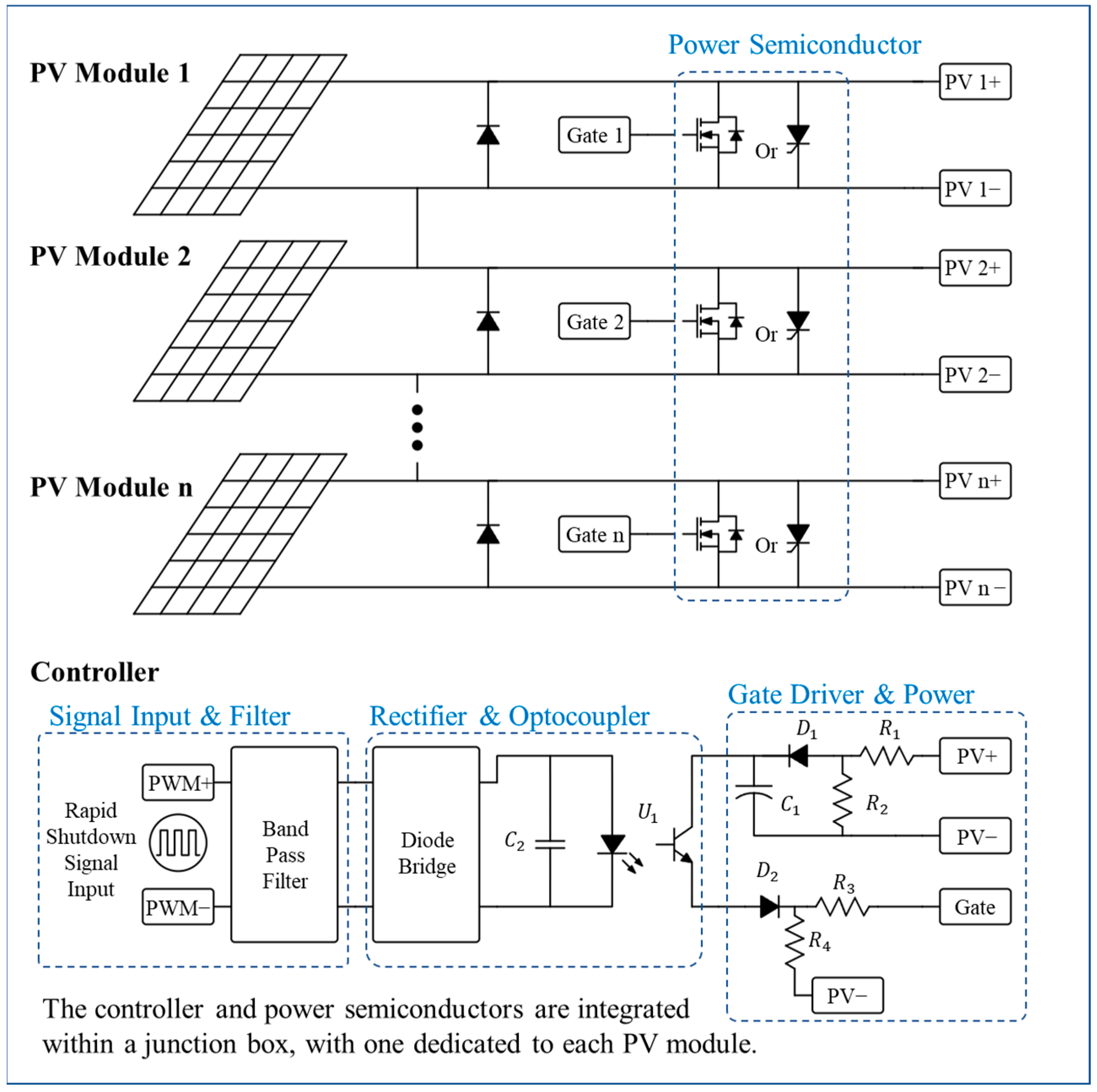
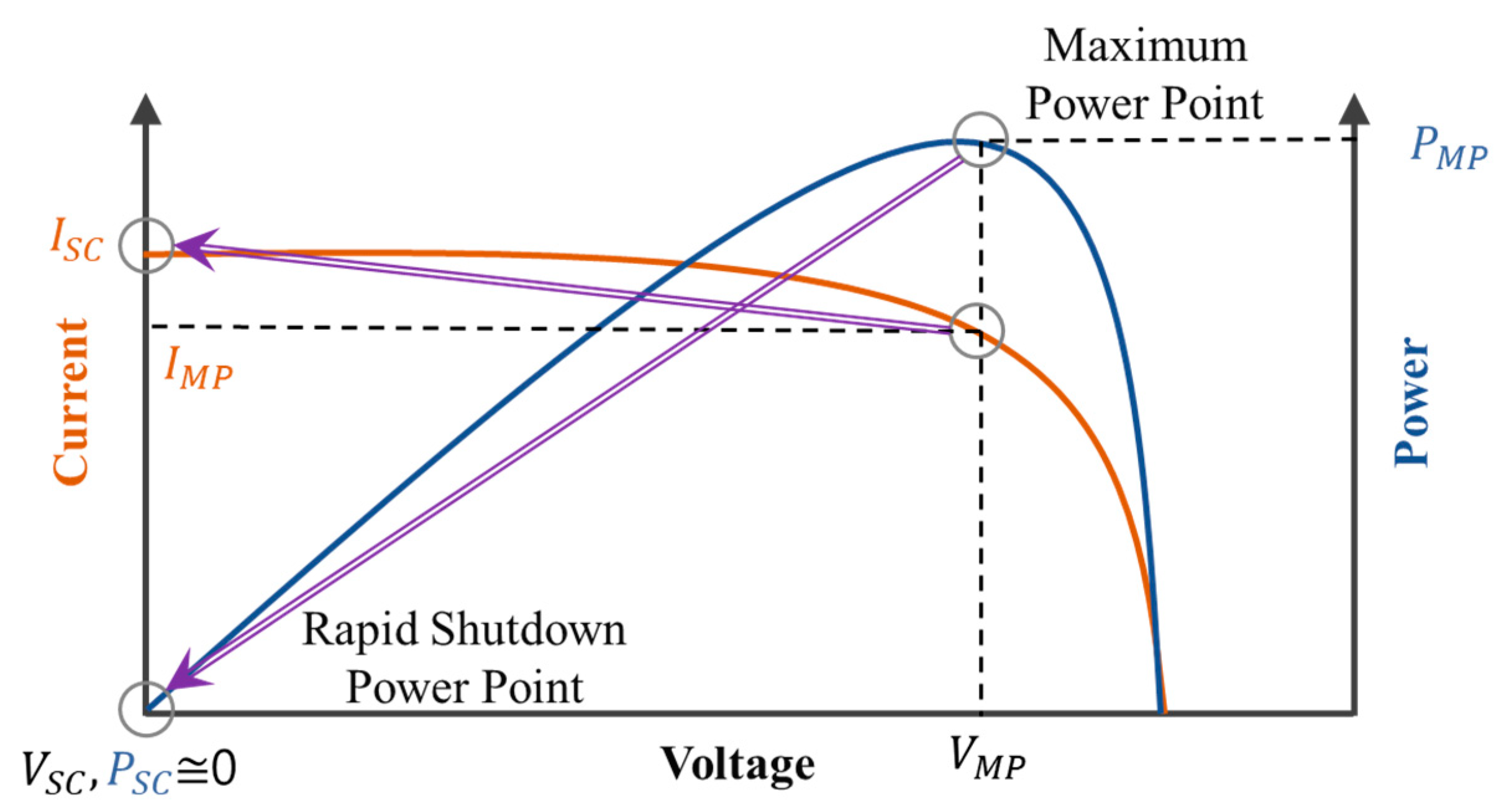


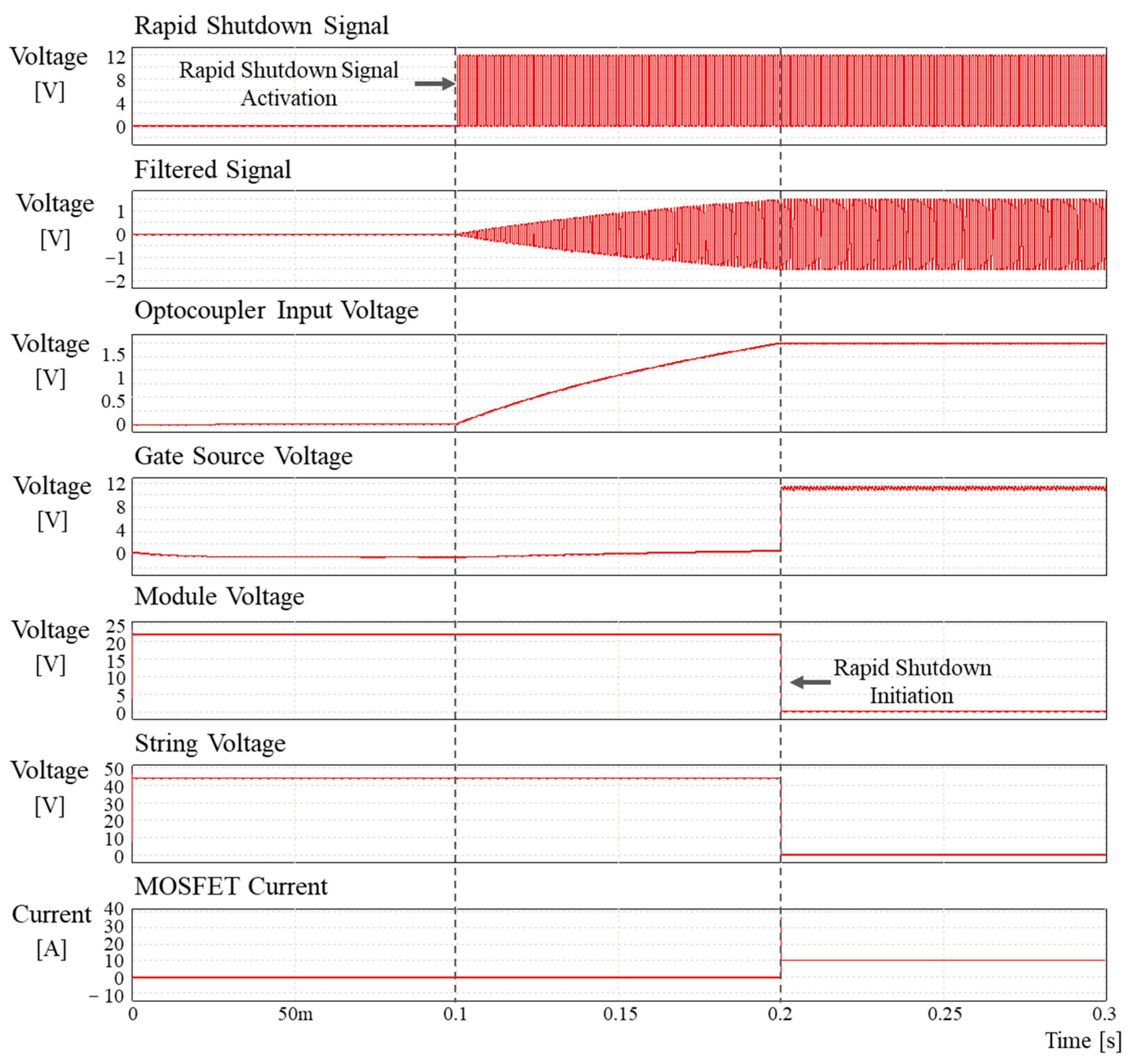
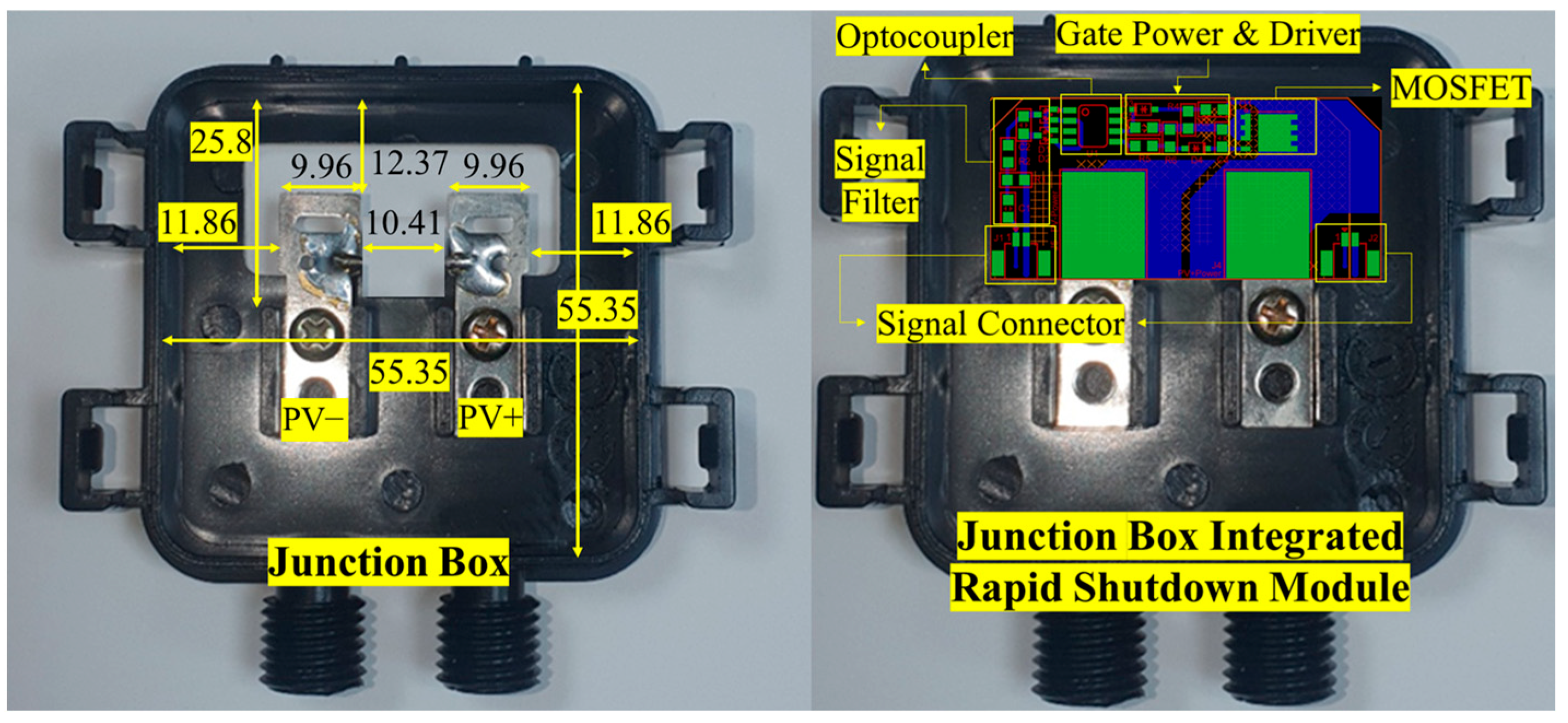

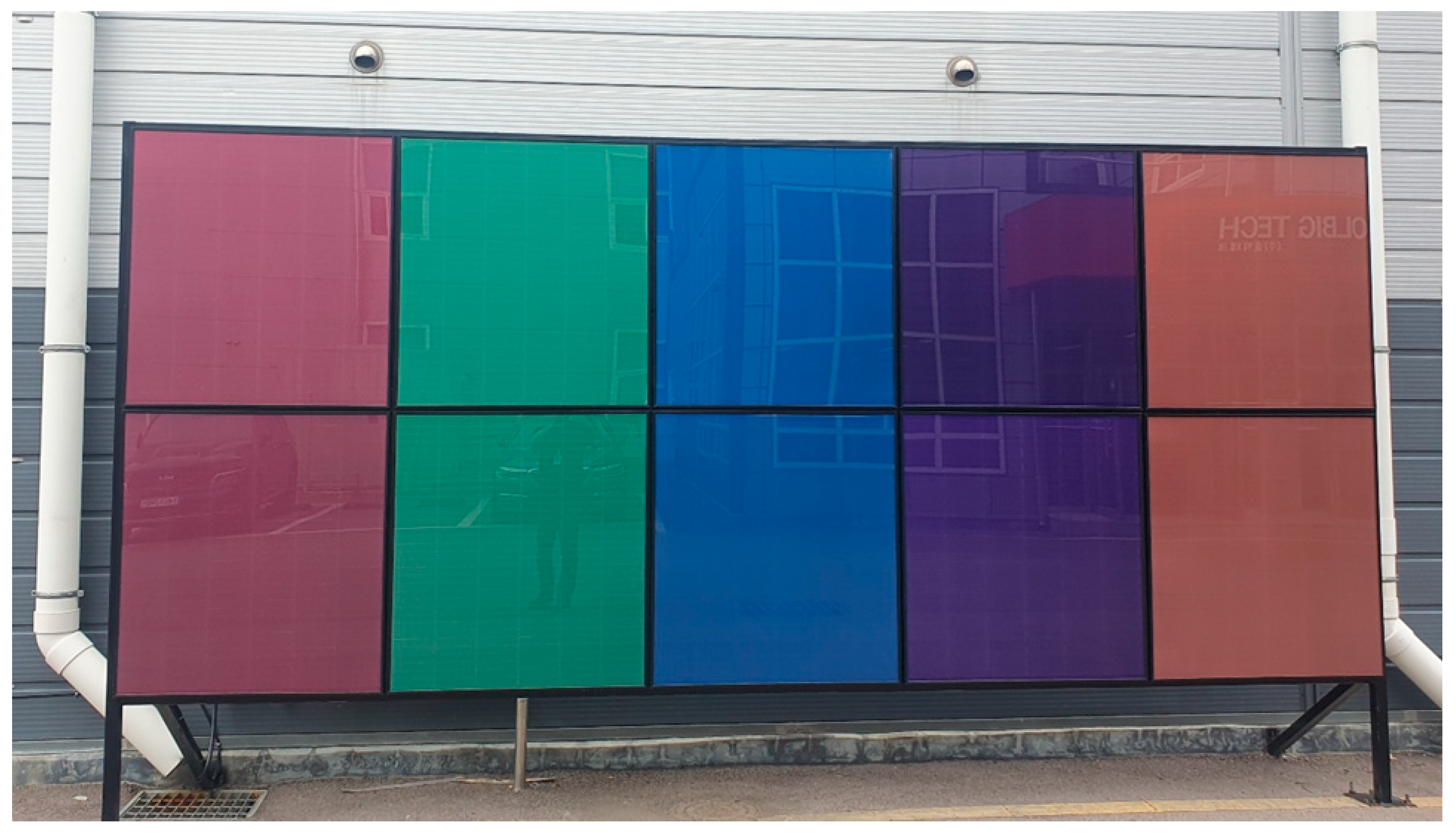
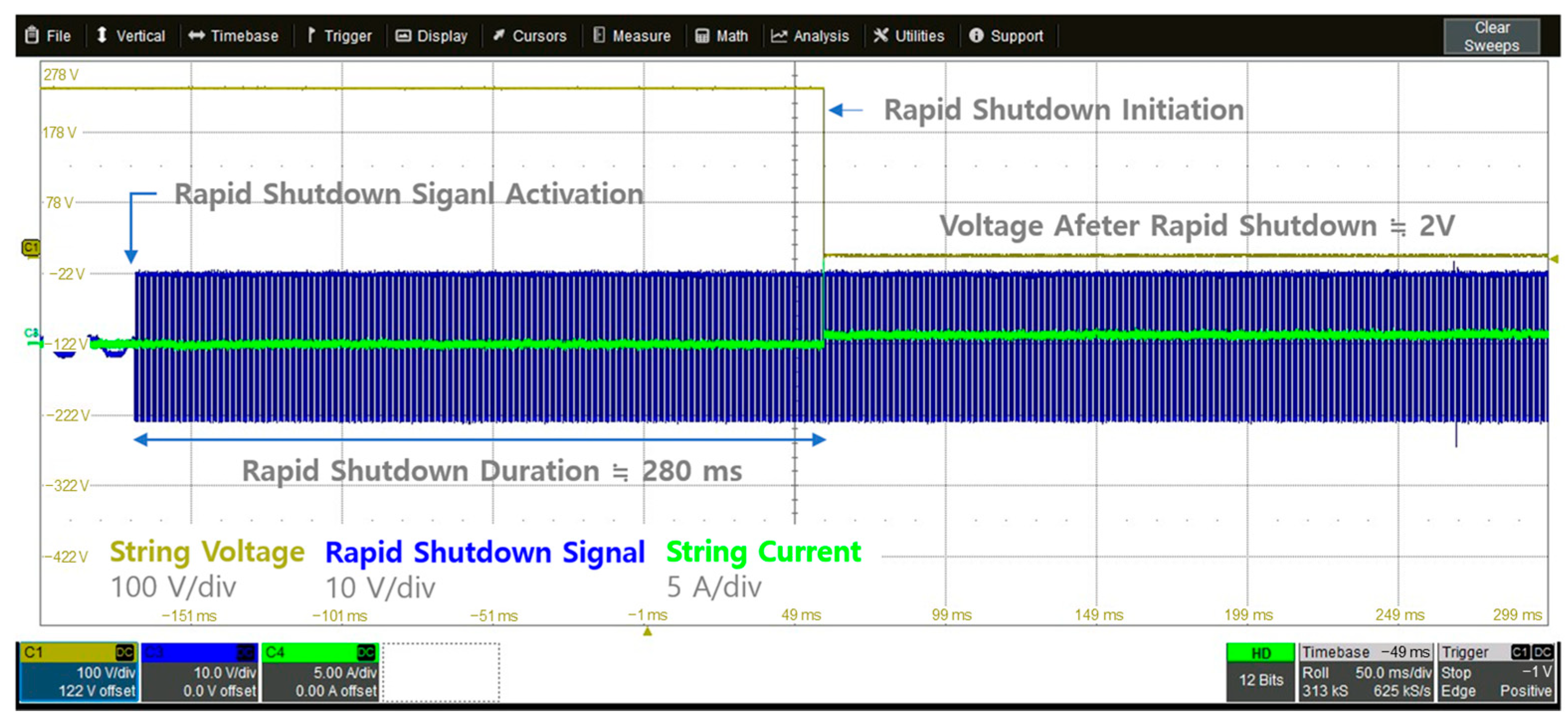

| NEC Version | Key Changes |
|---|---|
| 2014 | Introduced the first rapid shutdown requirement, mandating power disconnection outside a 10 ft zone within 10 s. Placing the inverter close to the array eliminated the need for “controlled conductors”; conductors beyond 10 ft required contactors/relays or disconnects [4]. |
| 2017 | Extended voltage reduction requirements to both inside and outside the array boundary. Mandated ≤ 30 V outside and ≤80 V inside the array within 30 s of shutdown, emphasizing MLPE use [5]. |
| 2020 | Formally recognized firefighters as stakeholders. Redefined the rapid shutdown device as a PV Hazard Control System Required a single Rapid Shutdown Switch for the entire system [6]. |
| 2023 | Excluded certain structures (e.g., parking canopies, carports) where rooftop firefighter work is not involved. PV system circuits terminating outside the building no longer classified as controlled conductors [7]. |
| Section | Contents |
|---|---|
| 1. Overall Requirement | The PV system circuit must include rapid shutdown functionality to reduce the risk of electrical shock to emergency responders in case of an emergency. |
| 2. Control Conductor Requirements | The control conductors apply to circuits supplied by the PV system. |
| 3. Control Limits | Array Boundary: The point 305 mm (1 ft) from the outermost part of the module and rack. |
| 3.1. Outside the Array Boundary | Control conductors outside the array boundary or at the building entry point, more than 1 m (3 ft) away, must be reduced to 30 V or less within 30 s after rapid shutdown is initiated. |
| 3.2. Inside the Array Boundary | Must meet one of the following:
|
| 4. Additional Definitions | The array boundary is the 305 mm (1 ft) boundary line from the PV module and rack edges. If multiple arrays are less than 2 ft apart, they are considered as a single continuous array. |
| Country | Standard | Requirements |
|---|---|---|
| USA | NEC 690.12 | Voltage must be reduced to a safe level within 30 s in the array [4,5,6,7]. |
| Europe | IEC 60364-7-712 | No direct requirements but provides safety guidelines [15]. |
| Australia /New Zealand | AS/NZS 5033 | Requires DC and AC disconnect switches, introduces module level rapid shutdown [16]. |
| Canada | CEC | Voltage must be reduced to a safe level within 30 s in the array [17]. |
| Germany | VDE-AR-E 2100-712 | Requires module level rapid voltage shutdown, considering fire safety [18]. |
| Japan | JIS C 8955 | Rapid voltage shutdown requirements are less defined, for emergency response [19]. |
| UK | BS 7671 | No clear requirements for rapid voltage shutdown [20]. |
| Parameter | Specification | Remarks |
|---|---|---|
| PWM Frequency | 1 kHz | Fixed frequency |
| Duty Cycle for Shutdown Command | 50% | Shutdown trigger signal |
| Signal Transmission Method | Daisy-chain wiring | Similar to BMS topology |
| Signal Reception Filter | Band-pass filter tuned at 1 kHz | Adopted from EV-EVSE standard |
| Control Line Voltage | 12 V ± 5% | PWM signal voltage level |
| Component | Parameter | Value | Unit |
|---|---|---|---|
| PV Module | 22.92 | V | |
| 10.57 | A | ||
| MOSFET | 20 | mΩ | |
| 2 | V | ||
| 1195 | pF | ||
| 31 | pF | ||
| 506 | pF | ||
| Optocoupler | Current Transfer Ration | 8 | - |
| 1.5 | V |
| Component | Parameter | Value Unit |
|---|---|---|
| Si MOSFET | Drain-Source Breakdown Voltage | 60 V |
Continuous Drain Current | 90 A | |
On-Drain-Source Resistance | 4.8 mΩ | |
Gate-Source Voltage | −20 V, +20 V | |
Input Capacitance | 6300 pF | |
Output Capacitance | 1100 pF | |
Reverse Transfer Capacitance | 47 pF | |
| Optocoupler | Current Transfer Ration | 100% |
Input Forward Voltage | 1.15 V | |
| Isolation Surge Voltage | 2500 Vac (rms) | |
Collector-Emitter Breakdown Voltage | 30 V | |
Collector Current-Continuous | 150 mA |
| Component | MLPE | Junction-Box– Integrated Rapid Shutdown System | String RSD |
|---|---|---|---|
| Power Inductor | w/ | w/o | w/o |
| Input Capacitor | w/ | w/o | w/o |
| Output Capacitor | w/ | w/o | w/o |
| PLC Module | w/ | w/o | w/o |
| MCU | w/ | w/o | w/o |
| Power Semiconductor | w/ (2 or 4 [ea]) | w/o (1 [ea]) | w/o |
| Auxiliary Power | w/ | w/o | w/o |
| Optocoupler | w/o | w/ | w/o |
| Circuit Breaker | w/o | w/o | w/ |
| Control Power Supply | w/o | w/o | w/ |
| Discharge Circuit | w/o | w/o | w/ |
Disclaimer/Publisher’s Note: The statements, opinions and data contained in all publications are solely those of the individual author(s) and contributor(s) and not of MDPI and/or the editor(s). MDPI and/or the editor(s) disclaim responsibility for any injury to people or property resulting from any ideas, methods, instructions or products referred to in the content. |
© 2025 by the authors. Licensee MDPI, Basel, Switzerland. This article is an open access article distributed under the terms and conditions of the Creative Commons Attribution (CC BY) license (https://creativecommons.org/licenses/by/4.0/).
Share and Cite
Jeon, J.-Y.; Kim, M.; Son, M.; Kim, J.-H.; Lee, Y.-D.; Kim, Y.-H. A Cost-Effective and Reliable Junction-Box–Integrated Rapid Shutdown System for BIPV Applications. Energies 2025, 18, 2983. https://doi.org/10.3390/en18112983
Jeon J-Y, Kim M, Son M, Kim J-H, Lee Y-D, Kim Y-H. A Cost-Effective and Reliable Junction-Box–Integrated Rapid Shutdown System for BIPV Applications. Energies. 2025; 18(11):2983. https://doi.org/10.3390/en18112983
Chicago/Turabian StyleJeon, Joon-Young, Minkook Kim, Myungwoo Son, Ju-Hee Kim, Young-Dal Lee, and Yong-Hyun Kim. 2025. "A Cost-Effective and Reliable Junction-Box–Integrated Rapid Shutdown System for BIPV Applications" Energies 18, no. 11: 2983. https://doi.org/10.3390/en18112983
APA StyleJeon, J.-Y., Kim, M., Son, M., Kim, J.-H., Lee, Y.-D., & Kim, Y.-H. (2025). A Cost-Effective and Reliable Junction-Box–Integrated Rapid Shutdown System for BIPV Applications. Energies, 18(11), 2983. https://doi.org/10.3390/en18112983






